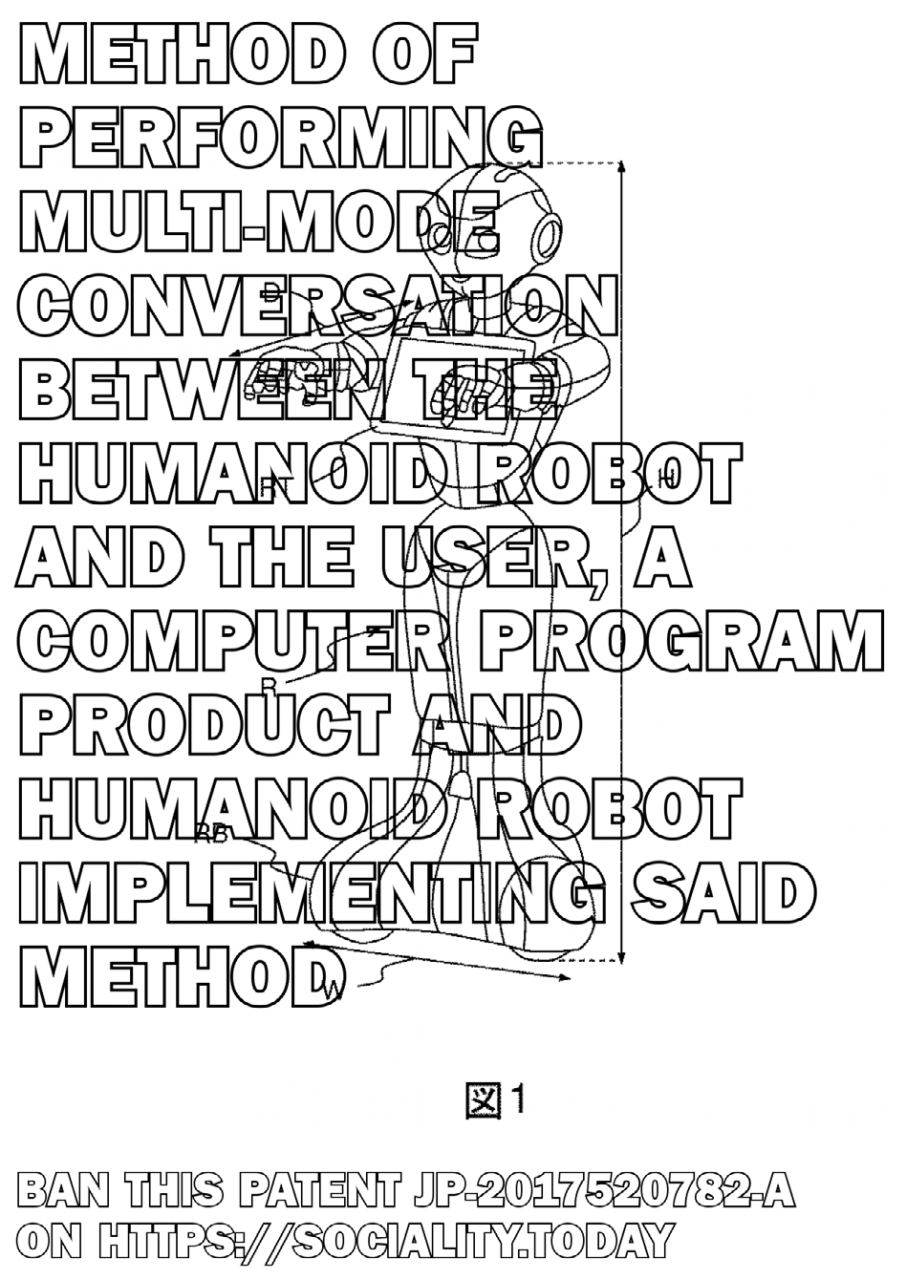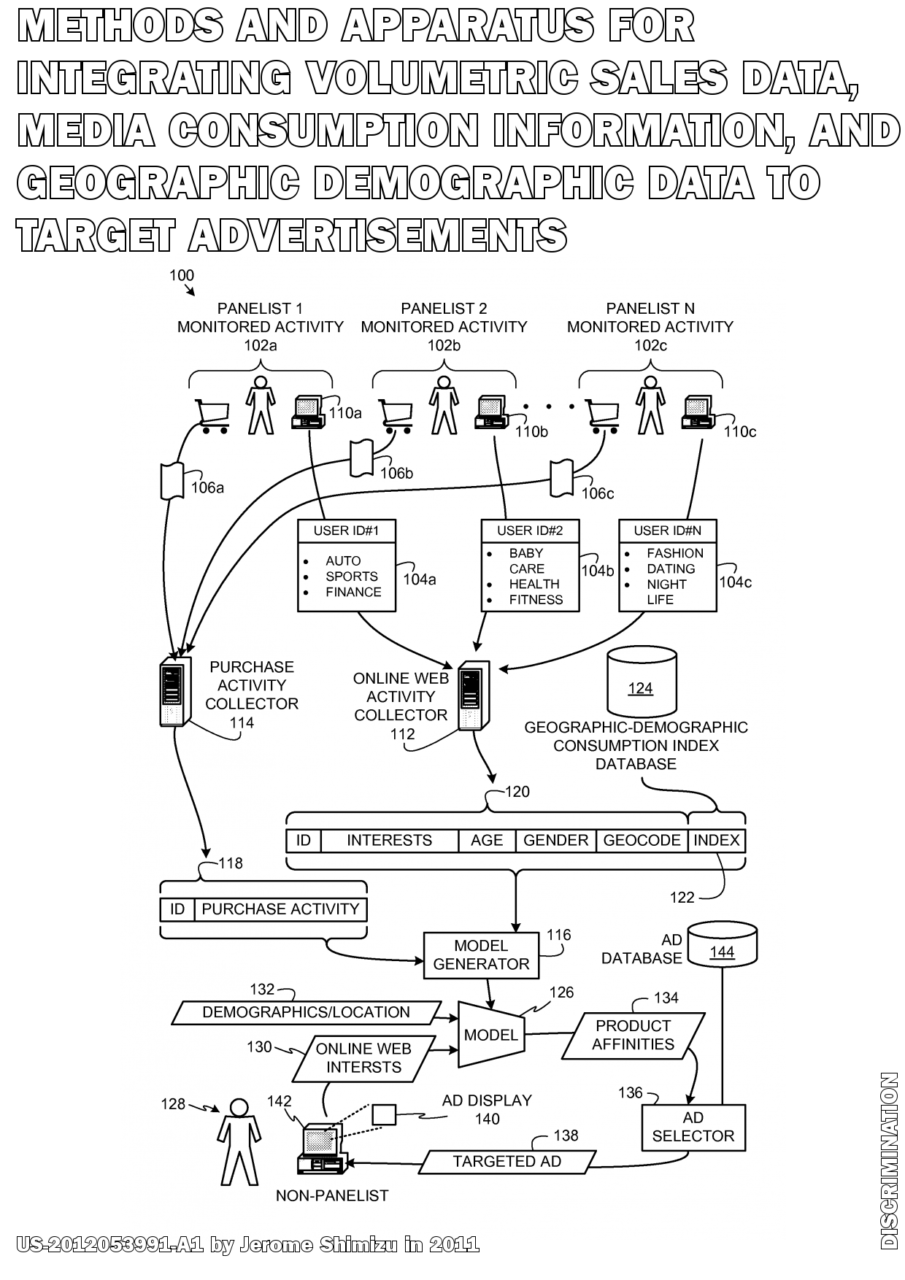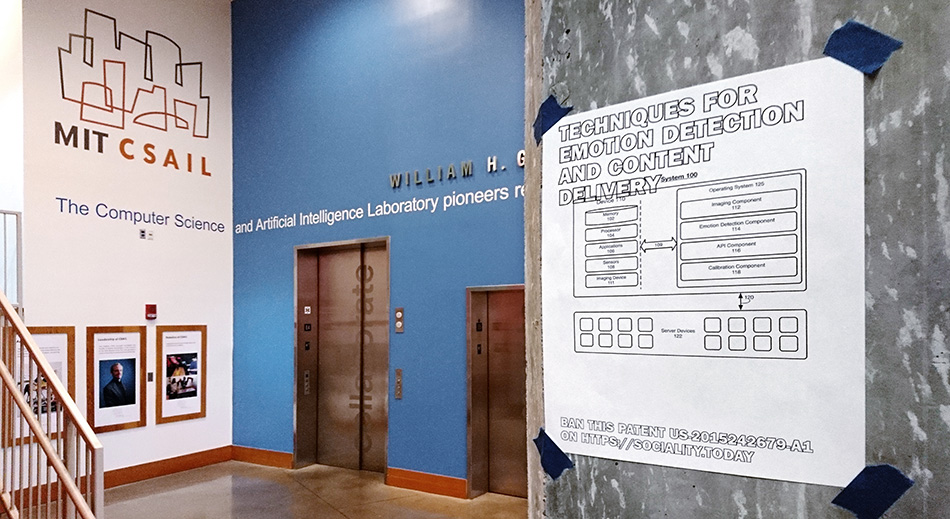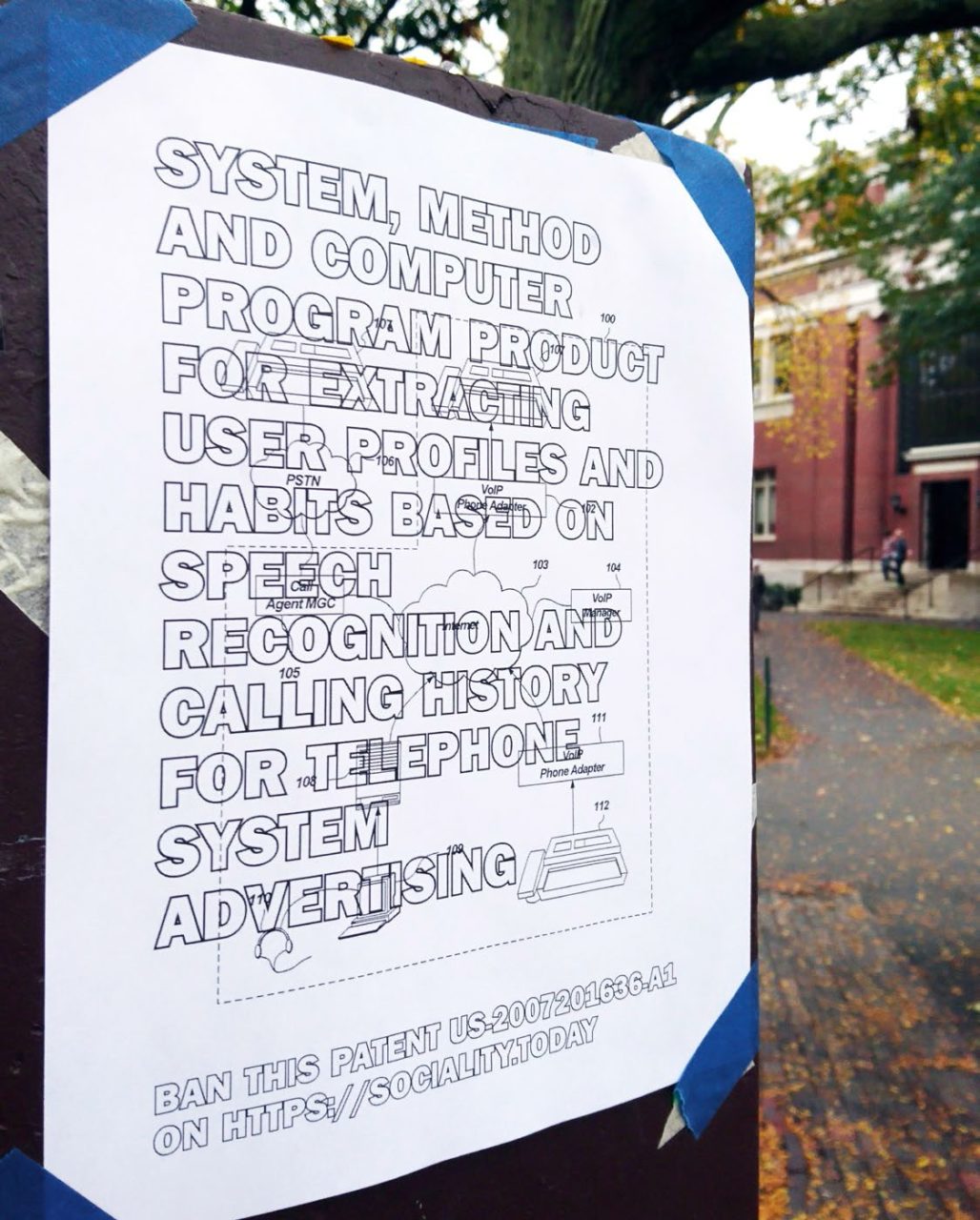The conceptual artwork Sociality is composed of over twenty thousand patents for online platforms, interfaces, algorithms, and devices. The artist Paolo Cirio investigated public repositories of patents to document technologies that conceal the social control, manipulation, and surveillance at play on the Internet.
Today, human sociality and psychology are affected by devices subtly designed to program social behaviours. Sociality seeks to inspire regulations, oversight, and public awareness regarding these apparatuses. Beyond addressing the technology itself, the artwork looks at intellectual property as a political and economic field that has become applied to the sociality of humans. Our sociality is now being owned and traded by private companies without public scrutiny.
This artwork documents the history of the unscrupulous business of engineering human sociality with the introduction of technology for social networks, Internet advertising, and even mind-reading. Sociality reveals some of the first patents from this particular technological field, dated around 1998, and it concludes in 2018, the year when nefarious unintended and intended social consequences of such technologies have become most evident and reported. These patents document the history of how humans began to be programmed by machines. A list of videos, books, news articles, and experts provides further information about the subject-matter of this project.

Paolo Cirio identified classes of patents, then collected, aggregated and sorted the data on the website http://Sociality.today where thousands of patents of problematic technologies are exposed. On Sociality’s website everyone is able to browse, search, submit, and rate patents by their titles, images of flowcharts, and the companies that created them. Both the artist and the online participants perform oversight of invasive inventions designed to target demographics, push content, coerce interactions, and monitor people.
With Sociality, Paolo Cirio reveals devices that are often obscured by technological language, trade secrets, and the public’s general unawareness. The documentary form of this artwork aims to shed light on contemporary mechanisms of social control by showing evidence of complex technological systems and their roles in enabling addiction, opinion formation, deceptions, discrimination, and profiling. Sociality examines the concepts of social bubbles, algorithmic bias, amplification of misinformation, behaviour modification, tech addiction, and corporate surveillance. Expanding from privacy and bias, this project focuses on technology for the manipulation of human behaviours and psyche. Attention economy, steered social validation, and habit-forming products can be psychologically damaging and impact social relationships to the point of harming the fabric of society and endangering democracy.
This artwork intervenes by seeking accountability for the creation and deployment of unethical Artificial Intelligence, user experience and interface design, data mining, network monitoring, mind sensors, and algorithms. These technologies should be handled and regulated as in similar developments in chemistry, biology, and genetics. As such, the banning of toxic and dangerous inventions should extend to information technology. For this proposition, the artist invites everyone to flag and ban patents through the interactive website of the Sociality project. This provocative and participatory component elicits engagement for a democratic and collaborative oversight. The images of flowcharts of patents are composed with short descriptions and patent numbers to be shared online or through printouts. These documents are eventually sent to legislators, academics, activists and journalists for advocating regulation and the potential banning of the publicly scrutinized technologies.

The visual strategy of flowcharts and graphics aims to make the project popular and emblematic for denouncing controversial inventions. In the art installation, hundreds of flowcharts of algorithms with their descriptions are printed in black and white on A4 paper sheets. Through integrating visual, conceptual, activist, and participatory aesthetics, the offline art installation and website constitute informative Internet art about the social and mental health effects of information technology.
In the exhibition, the public confronts large-scale compositions with images of flowcharts that abstractly invoke the complexity and magnitude of uncanny plans to program people. Furthermore, the artist invites children between the ages of 9 and 12 to color in flowcharts and descriptions of the patents as an integral component of the conceptual artwork.
As a final artistic gesture, Paolo Cirio will create an algorithm for aggressive social manipulation and control. He will then attempt to patent the algorithm to keep it unavailable to the industry. This ultimate act will propose to exploit intellectual property laws for halting socially harmful information technology.
We regulate the financial sector, we have checks and balances in the government, we ban the sale of guns, and toxic chemicals. As information technology impacts society perilously, we must also regulate both centralized and decentralized platforms, infrastructures, and interfaces with inventive, restrictive, and reflexive policies.
Regulatory Art
The cultural celebration of technology concerns the ethics of representation. Critical art should account for the intentional and unintentional social consequences caused by technolibertarianism. In a time when institutions struggle to regulate technology, artists can creatively engage with regulations and governance as a form of Regulatory Art.
Technology is now a cultural field in which belief systems, politics, and ethics are central in determining the acceptance of any technological system. Data, code, crypto, and platforms are not the law, nor above it, and they should never be. Technology has become a political agent and its governance needs creative, critical, and dynamic propositions from artists. Regulatory Art is the practice of addressing, engaging, and inquiring about regulations in the technocratic society we live in.
Paolo Cirio is an artist, researcher and lecturer engaging with the legal, economic, and cultural systems of the information society. His works investigate social fields impacted by the Internet, such as privacy, democracy, intellectual property, and finance. He shows his research and intervention-based works through photos, installations, videos, and public art.
Paolo Cirio is an artist, researcher and lecturer engaging with the legal, economic, and cultural systems of the information society. His works investigate social fields impacted by the Internet, such as privacy, democracy, intellectual property, and finance. He shows his research and intervention-based works through photos, installations, videos, and public art.






